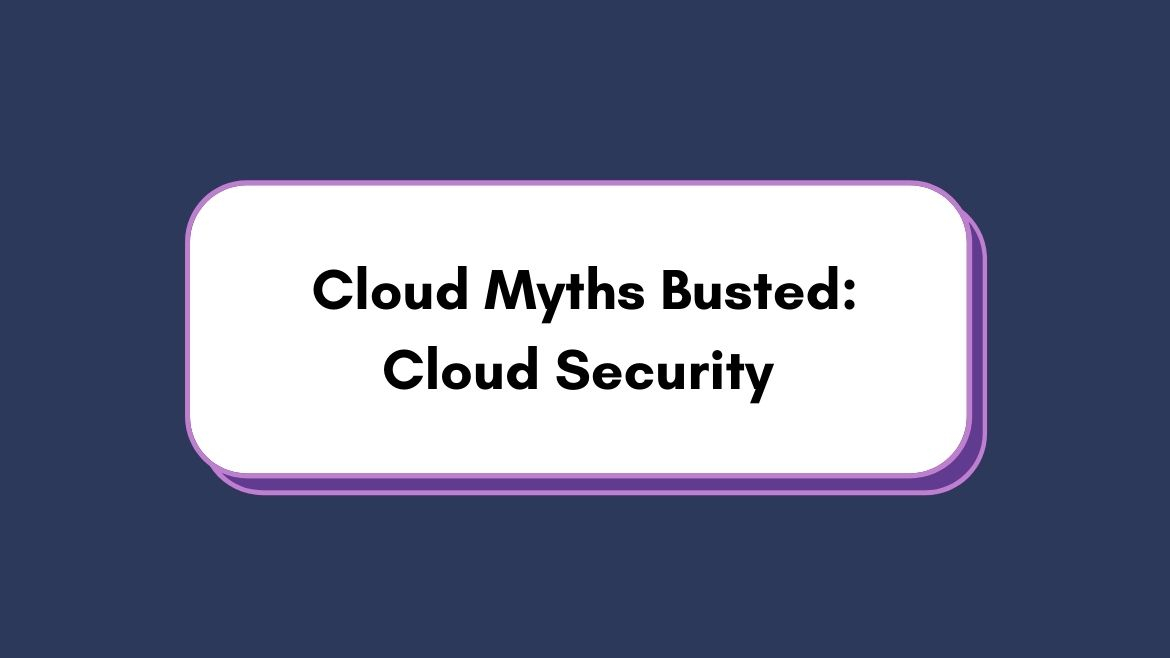Busting myths around cloud security

So, you’re considering a move to the cloud, chances are one of your biggest concerns is security. In fact, 40% of IT managers surveyed said security and compliance are some of the greatest challenges of an on-prem-to-cloud migration.
However, a staggering 94% of businesses that have made the move to cloud say security got better after the move—not worse. Not to mention the gains in profits, productivity, performance, scalability, and innovation.
So, when it comes to security, what’s myth and what’s truth?
Here are the three most common myths we run into:
MYTH - On-prem is more secure than cloud.
With a typical on-prem setup, a single login gets your team into the system. They cross your security moat with the right username and password and—voila!—they can get to whatever they need. It may sound good, but that’s a problem. Because all it takes is one bad actor, one phishing email, one hack and suddenly your whole system is vulnerable. All your internal data. All your customer data. All your code.
The answer to all of this is Atlassian’s zero trust approach. Instead of a single security moat protecting your proverbial data castle, zero trust means security checkpoints for every user and every tool. Systems check identity and device credentials and act as security gates between each tool. Which means if a hacker happens to get access to a single login, the damage they can do is limited by the user permissions and tools that login can access.
MYTH - My teams prioritize security better than cloud vendors.
Ask your in-house developers if they have enough time to spend on security issues and we’re guessing you won’t love the answer, since 48% of developers say they don’t. Even worse, with 52% of employees saying their bosses don’t have time to meet with them, your leadership probably doesn’t even know about this security disconnect. With the right cloud vendor, this quiet de-prioritization of security disappears.
That’s why, with the use of Atlassian tools, Nimaworks makes security a priority—with rigorous testing, disaster recovery plans, and encryption in transit and at rest, among other best practices. Patches and updates are released as they’re available, which means you are always operating on the most secure version of your cloud tools.
No matter your size or user tier, every customer gets access to Atlassian’s enterprise-grade security. Atlassian has spent quite literally millions to make sure it’s airtight, and they’ve stated it’ll continue to be a priority. This means teams that have been dividing focus between security and other issues in house are now free to devote their time to supporting your teams and improving internal systems.
MYTH - My teams are not on the cloud yet.
By the end of 2020, one third of all successful attacks on company security will be through what IT pros call Shadow IT—tech tools your employees are using that are not administered (and therefore not kept secure) by your IT team.
That’s a pretty staggering figure—and a largely preventable one. The reason employees are using cloud tools without your IT team is because they can’t get what they need within your current frameworks. The reason they’re turning to cloud tools is because they improve productivity, speed, collaboration, and results. In fact, 97% of IT pros say employees are more productive when they use their preferred tools. And if you aren’t providing those tools? Employees take matters into their own hands.
Gartner explains: “CIOs must change their line of questioning from ‘Is the cloud secure?’ to ‘Am I using the cloud securely?’” It’s not a question of whether or not you should use the cloud; it’s a question of whether your employees have the tools they need to use the cloud securely.
So, are you ready to make the move? We at Nimaworks, are here to answer all your concerns around cloud security and help you make the move. Let's talk.






